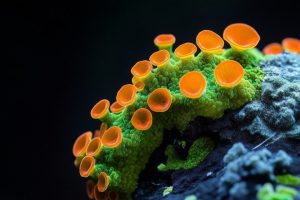New research has shown how a simple circadian clock has powerful noise-filtering abilities, improving our understanding of how biological circuits maintain their accuracy in dynamic natural environments. The study highlights the remarkable ability of circadian clocks to adapt to environmental fluctuations while maintaining their accuracy. The findings are important for understanding how organisms—from bacteria to humans—measure time in response to external changes such as light and temperature caused by the Earth’s 24-hour rotation.
The study, published in Nature Communications and involving researchers from the Sainsbury Laboratory at the University of Cambridge, Imperial College London, the University of Warwick, and Forschungszentrum Jülich, found that the circadian clock selectively filters fluctuations in environmental signals, such as changes in light duration and intensity. This allows the clock to ignore minor disturbances while responding to significant environmental changes.
The Circadian Clock Can Distinguish Between Meaningful Stimuli and Environmental Noise
Anyone who has ever crossed multiple time zones and experienced jet lag knows how strongly our biological clocks influence us. In fact, every cell in the human body has its own molecular clock that regulates daily cycles over a 24-hour period. It is important that the internal clocks of cells remain synchronized over long periods of time, but also that they can adapt to changes in the environment. The gradual fading of jet lag symptoms illustrates how our internal clocks adapt to such new conditions—by adjusting our circadian clock to the new day-night cycle in a different time zone.

Cyanobacteria Clocks are Extremely Robust
Dr. Sasha Eremina, first author of the study, who conducted the research for her PhD, said: “We first investigated the intrinsic accuracy of circadian rhythms under continuous light. To do this, we developed a microfluidic device called the ‘Green Mother Machine’ to keep the original mother cell at the top of the growth chamber so that we could image the cell using long-term time-lapse fluorescence microscopy. With our setup, we were able to observe the growth of individual cells and gene expression over several days with a precision that was not possible in previous studies.”
The team began working on the Green Mother Machine in 2016, based on earlier Mother Machine designs developed for non-photosynthetic bacteria. It turned out that cyanobacteria are much more difficult to grow in these microenvironments than other microbes. “It took years of experimentation to overcome the technical challenges and ensure that we had the right tubing material, the right chip design, and the right integration with the light control system so as not to damage photosynthesis and the cell membranes,” said Dr. Bruno Martins of the University of Warwick. The researchers showed that cyanobacterial clocks are exceptionally robust despite constant disruption of clock components and regulatory mechanisms by cellular noise. This robustness allows the cells to tick in sync for hundreds of days.
How Biological Circuits Can Function Precisely in Natural Environments
The cyanobacteria clock consists of three Kai proteins that constantly bind and separate under the influence of a biochemical process called phosphorylation, resulting in a rhythmic 24-hour cycle. Using mathematical models and mutagenesis, the researchers were able to show that this robustness is rooted in the core of the Kai protein-based oscillator and not in the broader gene regulatory network. This discovery is promising for those working on applications of synthetic biology, where stable time-keeping systems are essential.
The researchers also exposed the cyanobacterial clock to complex light-dark cycles, including artificial and natural environments, to understand how it copes with daily weather changes. Remarkably, they replicated realistic meteorological light patterns from the Caribbean Sea, to which the cell clocks responded in a manner predicted by their mathematical model. Despite the different light conditions, the cyanobacterial clock showed a remarkable ability to filter out environmental noise while maintaining a certain sensitivity to changes in the environment. According to the researchers, their results illustrate how a simple clock network can exhibit complex noise filtering properties and deepen our understanding of how biological circuits can function precisely in natural environments.







